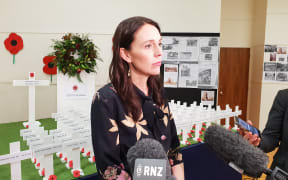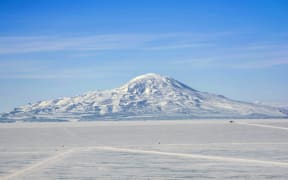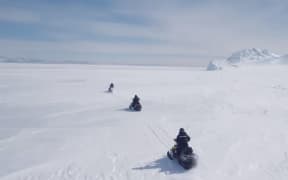The crash of an Air New Zealand plane on Mt Erebus on 28 November 1979 was the country's deadliest disaster, and the investigation into it produced the now well-known phrase: "An orchestrated litany of lies" .
RNZ and Stuff's new podcast, White Silence, explores the Erebus disaster 40 years on and explains why the controversy remains.
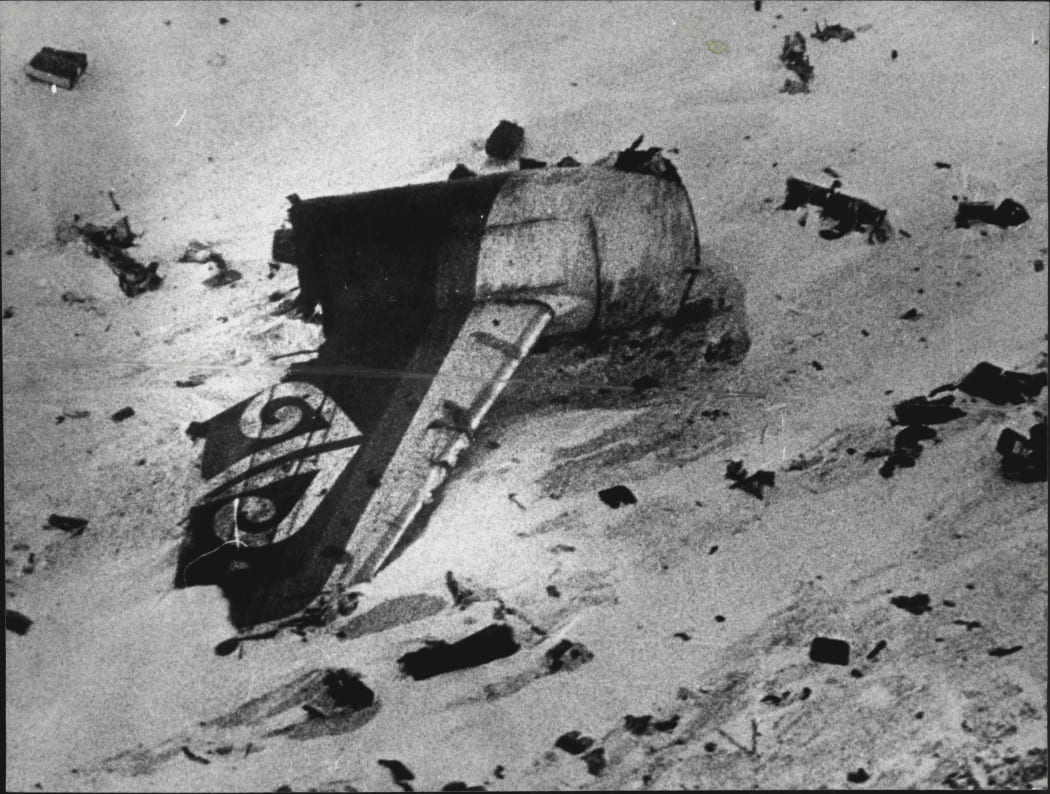
A koru on the tail of Air New Zealand Flight TE901 at the site of the Mount Erebus crash. Photo: Colin Monteith / Antarctica New Zealand Pictorial Collection
By Michael Wright of Stuff.co.nz
Analysis - Erebus. You don't need to say any more than that. Just the one word and any New Zealander knows what you mean: Antarctica, plane crash.
The name of the volcano that an Air New Zealand DC10 slammed into on 28 November, 1979, killing all 257 people on board, has become shorthand for tragedy and controversy.
It is still the country's deadliest disaster and it's almost as well-known for one famous phrase: "An orchestrated litany of lies."
For all that name recognition though, how much do you really know about what happened?
What was the orchestrated litany of lies? Who was supposed to be lying? And why did the plane crash?
Some people know all about those things. But most of us don't. And really, we should.
Not just because it's our worst-ever disaster, or a major anniversary is upon us, but because too few people over the years have ever really, properly reckoned with them. And that has got us where we are today. Forty years on, with an unresolved mess.
When you don't know anything about Erebus, and you start looking into it, there are a couple of things that really grab you. And this is one of them - that the crash is only a part of the story.
What came next was, in its own way, just as bad. Erebus became a story about blame, when it should have been about grief.
Two sides emerged. Each convinced the other was responsible for the crash, and neither was prepared to give an inch. Was it the pilots' fault, or Air New Zealand's? The pilots - Captain Jim Collins and First Officer Greg Cassin - had been badly misled. But the two sides couldn't agree on whether or not that absolved them of responsibility.
The argument has dragged on and on and prevented any real closure. To the point where the Prime Minister - who this year finally announced the plans for a national memorial to the 257 victims of the disaster - wasn't even born when it happened.
The other thing that gets you is the circumstances of the crash: the plane just flew into the mountain. There was no mechanical failure, it wasn't caught in some polar storm, it just flew into the mountain. At 1500 feet. When the investigators listened to the cockpit voice recorder (black box) they were stunned to hear that in the final seconds before impact, none of the flight crew saw Erebus in front of them.
The ground proximity warning system was sounding - whoop whoop, pull up - but there was no panic, no extreme evasive manoeuvres.
Captain Collins calmly called for "go round power" two seconds before impact. How the hell did no-one see it?
Stuff and RNZ's new podcast, White Silence, explores the tiny details and the big ideas that made Erebus what it was: a disaster for its time and, frankly, a blight on our recent history. If you want to know more, please - go listen.
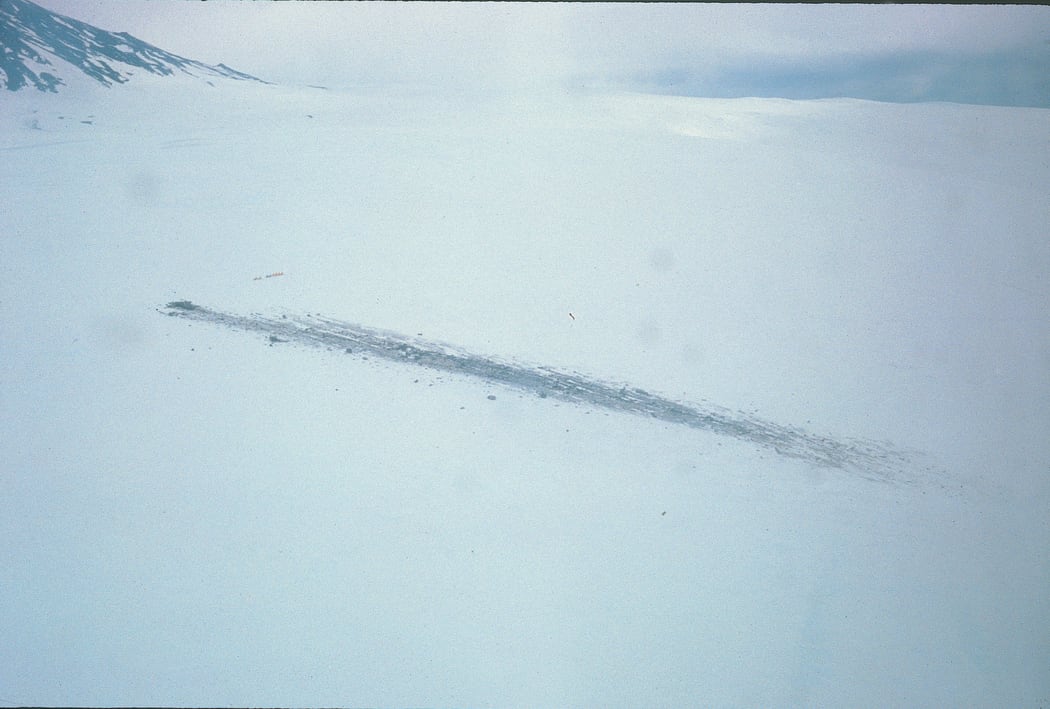
A view over the Erebus crash site not long after the disaster shows the trail of debris strewn over the snow. Photo: Robert Baden Thomson / Antarctica New Zealand Pictorial Collection
What about Air New Zealand?
It's probably no spoiler to tell you that at the heart of the story is Air New Zealand.
One of our best-known and liked companies - the quirky safety videos, the awards. Remember Rico the puppet? This might be hard to believe if you're not old enough but, 40 years ago, Air New Zealand was even more beloved by the public than it is today.
Its slogan was "nobody does it better" and you were hard pressed finding a Kiwi who disagreed. It was the little airline that could. The idea that it could escort you to Antarctica and back in a day while you sipped Champagne in your shirtsleeves only added to our collective sense of pride.
But after Erebus, that was gone. If you know the phrase "an orchestrated litany of lies" there's also probably no spoiler in telling you that the man who wrote it, Justice Peter Mahon, was talking about Air New Zealand.
Justice Mahon led the royal commission of inquiry into the disaster and whether or not he was right became the central question of the Erebus aftermath.
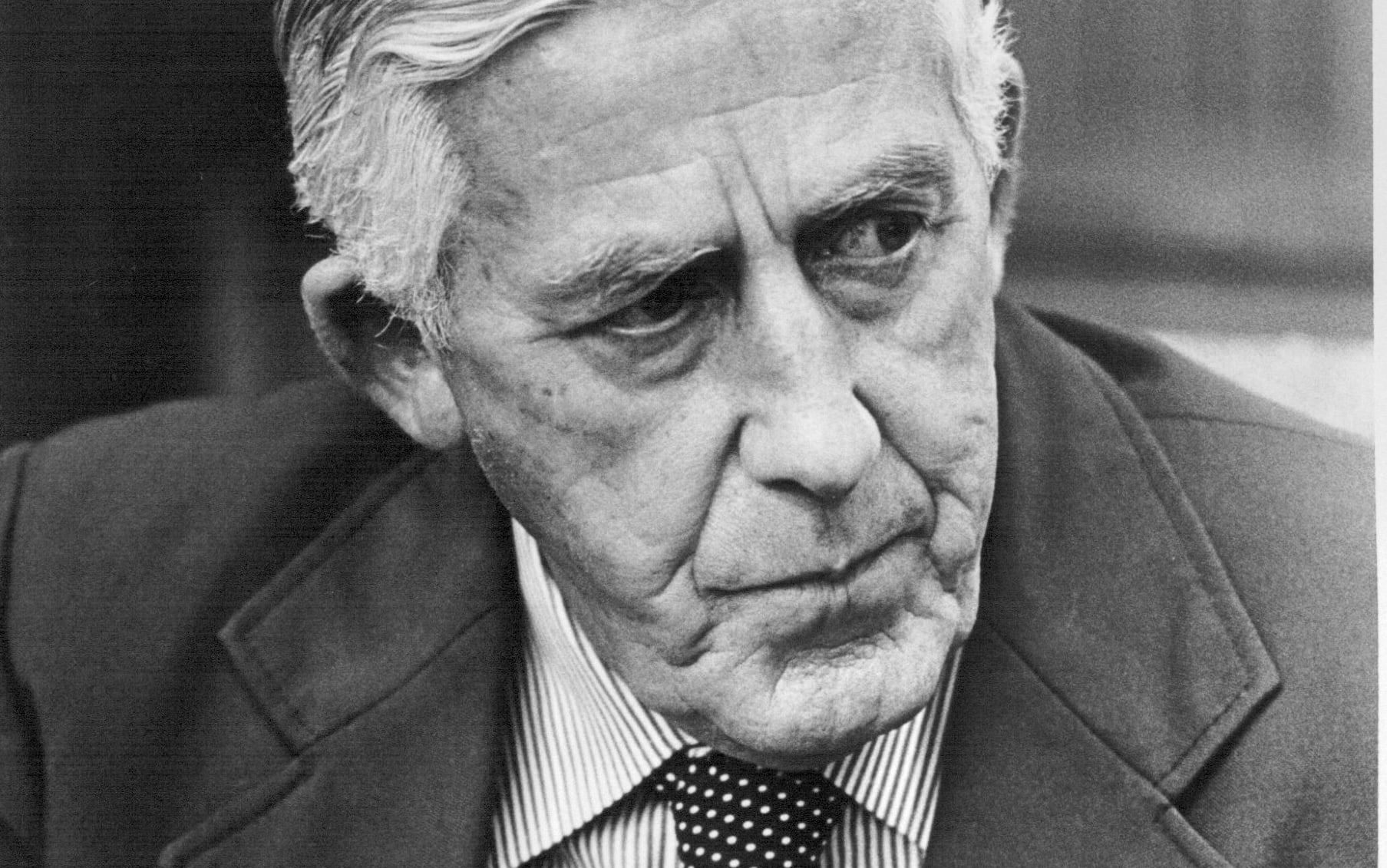
Justice Peter Mahon. Photo: Fairfax Media NZ
And regardless of what you think the answer is, Air New Zealand is unavoidably part of it. The airline is the only constant in the Erebus story. It's now 40 years since the crash and many of the key players from the fallout have died. The airline declined an interview request for this podcast.
If New Zealand is ever going to properly confront and move on from its worst-ever disaster, the national carrier must take the initiative. Because whether it likes it or not, Erebus is part of the Air New Zealand story.
It's in its bones and there's no getting away from it. No amount of detached compassion will change that. Ten years ago it apologised for the cold-hearted way it treated the families of the dead after the crash. "Sorry to everyone affected who did not receive the compassion and support they should have from Air New Zealand," then chief executive Rob Fyfe said.
But Mr Fyfe said nothing about the mistakes the airline made that contributed to the crash.
What was the flight like?
Air New Zealand flight TE901 took off from Auckland Airport just after 8.15am on 28 November, 1979.
On board were 237 passengers and 20 crew. The only people with any experience flying in Antarctica were flight engineer Gordon Brooks and the in-flight commentator Peter Mulgrew.
Mr Mulgrew was a mountaineer and an adventurer. He was part of the British Antarctic expedition in the 1950s and later lost both his feet to frostbite while climbing in the Himalayas. He wasn't initially rostered for the 28 November flight, but swapped with one of the other commentators - his friend, Sir Edmund Hillary.
This trip was a big deal for most of the people on it. Tickets on Air New Zealand's Antarctic sightseeing flights weren't cheap. They cost at least $200 - well over $1000 in today's money. Malyon Allan was an ex-Navy man fascinated by Antarctica. He bought tickets for he and his wife, Marjorie, but Marjorie wasn't too keen, so their daughter Jane said she'd go. At the last minute, Marjorie joined them.
Twenty-six-year-old Christine Nicholson taught standard 4 at Woolston Primary School in Christchurch. Her class had been studying Antarctica for weeks and their teacher returning with photos and a first-hand account of the ice would be the culmination of the project.
The plane took about five hours to reach Antarctica. A Champagne breakfast (omelettes, bacon, lambs kidneys) was served. Lunch was to have been a choice of chicken Souvaroff, prawns, scallops or steak and 'peach Erebus' for dessert.
The whole flight was a first-class cabin. The cockpit door was often open, and passengers could chat with the flight crew. As the plane flew south down McMurdo Sound, it dropped from cruising altitude - over 30,000 feet - to under 20,000 feet.
The weather was far from perfect - the cloud got thicker the further south the plane went - but the passengers could still see the land rolling out below them. They started moving around, getting excited.
They got their cameras out to record the moment. Many of these photos were recovered. Mostly they showed the bleak coastal outlines of McMurdo Sound but a few were of the inside of the cabin.
They are perhaps the most unnerving remnant of the whole Erebus story: pictures of happy people unaware that they are about to die.
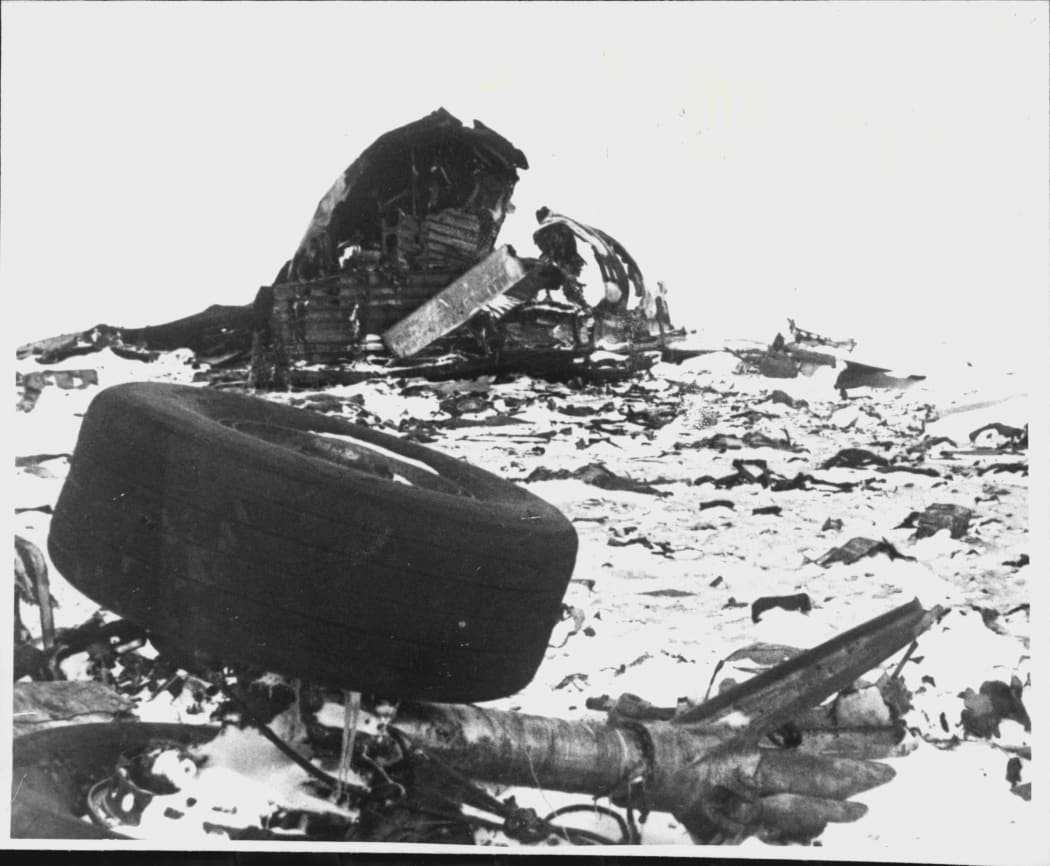
Wreckage at the site of the Erebus disaster. Photo: Fairfax Media NZ
As the plane descended, it completed two big orbits to keep clear of gathering cloud. Both times it was only minutes from hitting Erebus. After the second loop, it turned south to face the mountain for the final time. Its altitude was 7000 feet and dropping.
With the cloud above, no-one could tell that the strips of land to the left and right weren't the two sides of McMurdo Sound. They were Cape Tennyson and Cape Bird and they were in fact flying into Lewis Bay on the north side of Ross Island. The plane got down to 2000 feet. It was about three minutes from impact.
Sixty seconds before the end, the crew sensed something might not be quite right. Captain Collins said: "Actually, those conditions don't look very good at all - do they?" The crew discussed their altitude - now 1500 feet - and their inability to reach McMurdo Station air traffic control on the radio.
Thirty seconds to go. Flight engineer Gordon Brooks said: "I don't like this." Soon after, Captain Collins said: "We're 26 miles north we'll have to climb out of this." He had just started to turn to the left when the alarm sounded: whoop whoop, pull up. No-one had any idea what hit them.
The impact on a nation
Scroll down the roll of remembrance of the victims and you see clusters of names: Allan, Anderson, Chadderton, Crabtree, Mitsuhashi, Palmer, Williams. Couples, in-laws, siblings taken together. At least two families lost three people.
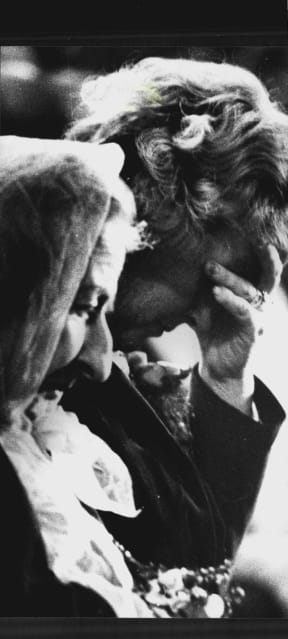
Photo: Fairfax Media NZ
The disaster cut deeply into New Zealand.
It was said at the time that if you didn't know someone on the plane, you knew someone who did. That was only a small generalisation. In 1979, the country's population was just over three million.
Two-hundred and fifty-seven deaths went a long way. The country hadn't been exposed to a loss of life on such a scale since World War Two.
And you have to go back to the trench slaughter of World War One to find a single, deadlier day in New Zealand's history than 28 November, 1979.
All of this adds up to a plea: we need to deal with our tragedies better. Too often in our recent past disasters have been followed by disastrous aftermaths. Erebus is the worst example of this.
So, 40 years on, it needs to be more than a date. A death toll. A location. A deeper understanding is needed if we are truly going to move on, and avoid the same pitfalls the next time disaster strikes.
Please, listen to White Silence.
This story is part of White Silence, a six-part podcast series from Stuff and RNZ to mark the 40th anniversary of the Erebus disaster. You can listen to White Silence on RNZ, Stuff, or via Apple Podcasts, Spotify, Stitcher, or any other app using the RSS feed. The episodes will be released daily from Friday, November 8.


